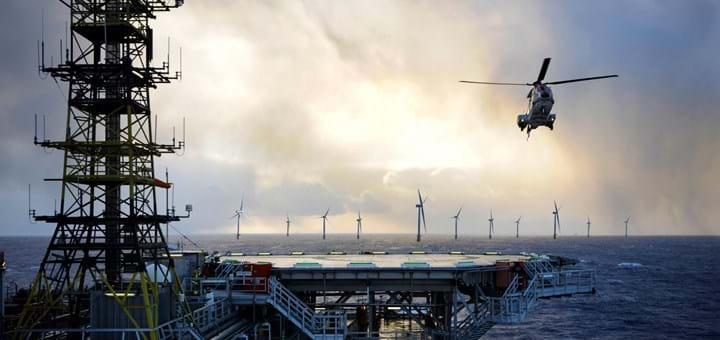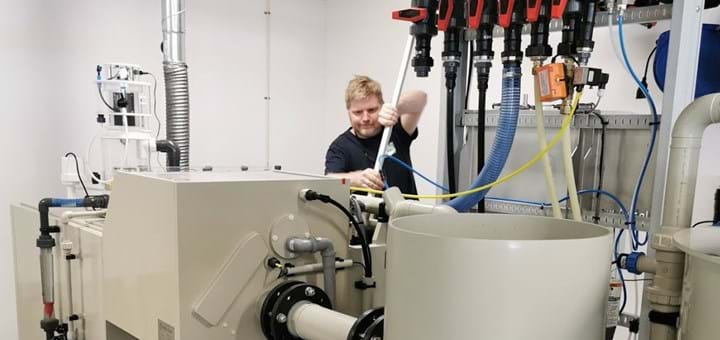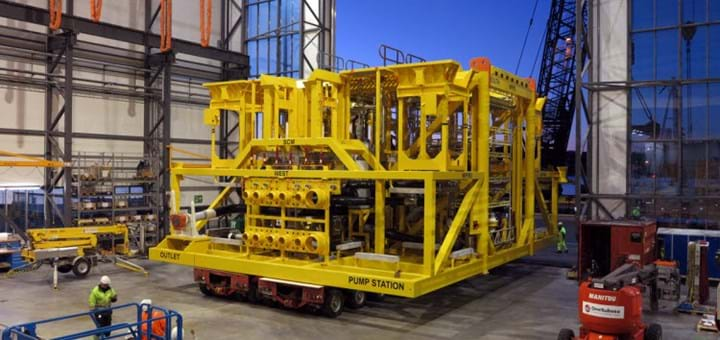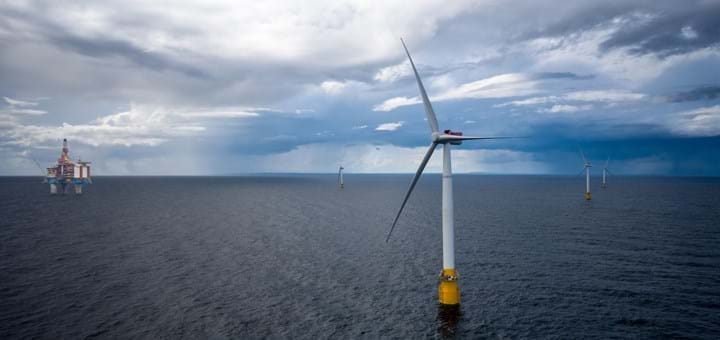Inside Europe’s largest CCS project at CCB Energy Park
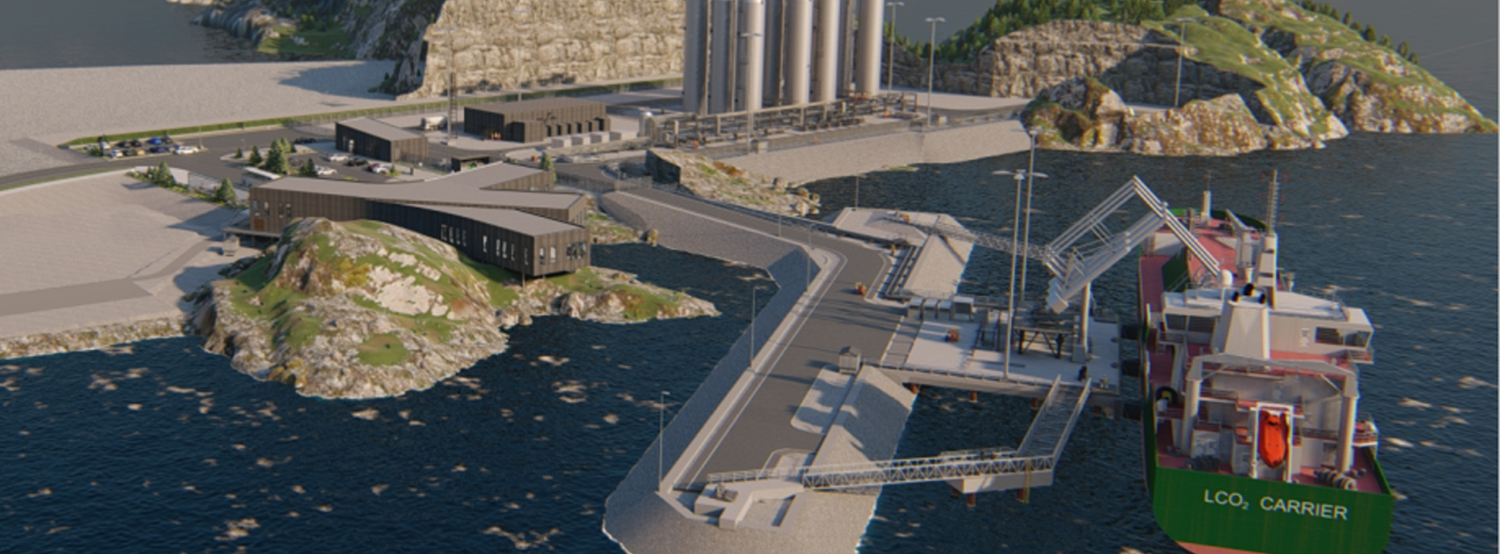
The Northern Lights project could encourage the growth of a new industry in Greater Bergen.
Norway, through the Northern Lights Project (consisting of Equinor, Shell and Total), is planning to capture, transport and store large volumes of carbon dioxide (CO2) subsea, under the Norwegian Continental Shelf – here’s what you need to know.
When first phase is complete, Norway’s Northern Lights facility will manage to receive and store 1.5 million tonnes of carbon dioxide per year. The capacity is planned to be increased significantly.
That’s a staggering amount of CO2, equivalent to taking 325,000 cars off the road, and would make a hefty dent in the country’s overall emissions figures.
Listen to our new podcast with CEO Ronny Haufe, talk about CCB Energy Holding in transition.
The Facts
The Northern Lights CCS (Carbon Capture & Storage) project will start by receiving major amounts of CO2 captured from two facilities in the south of Norway, before shipping this to Øygarden municipality on the country’s west coast.
The CCS facility will be located at CCB Energy Park at Kollsnes.
The project includes the Norcem cement factory at Brevik, which will capture roughly 400,000 tonnes of CO2 per year.
Demonstrating CO2 capture from a cement factory will be an important milestone, as the cement industry accounts for roughly 5-7 percent of total CO2 emissions globally.
The project also includes Fortum Oslo Varme, a waste-to-energy power plant that provides Oslo with district heating services. This facility is also aiming to capture 400,000 tonnes of carbon dioxide each year.
Once captured, the CO2 will be compressed and cooled until it reaches a liquid form. It will be loaded onto ships and transported to the terminal at Kollsnes in Greater Bergen. From here, the carbon dioxide will be pumped through a 110 km pipeline into the approved geological reservoir in the North Sea Basin, where it can be safely stored.
In addition, other companies will be delivering CO2 to the CCS facility at CCB Energy Park. There is a rising demand to capture and deliver CO2 to a safe and secure CCS facility.
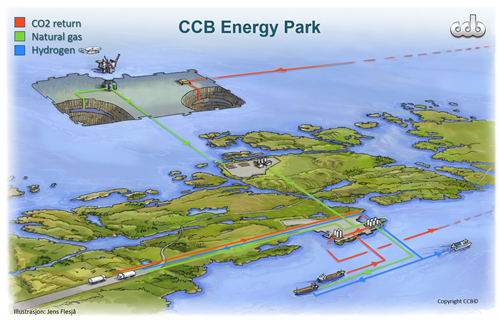
The planned facility at CCB Energy Park will be able to store huge amounts of CO2 under the seabed. Kollsnes is also home to a natural gas processing plant, and the area could be used to produce hydrogen in future. Photo © CCB EH.
Carbon Capture and Use
The company CCB Energy Holding, together with Øygarden municipality, is the owner of the location in Øygarden at Kollsnes.
The Northern Lights Project will be the owner of the planned hub for receiving and storing CO2 as part of the project at CCB Energy Park.
CCB Energy Holding, together with Øygarden, believe that the Northern Lights Project could encourage the growth of a whole new industry in Greater Bergen.
CCB Energy Holding already experiences strong interest from companies that want to store their waste carbon dioxide. CCB Energy Park wants to further develop the area towards companies with a strong climate friendly profile.
The area will attract not only companies that need to deliver CO2, but also other production companies that can take advantage of the CO2 storage facility.
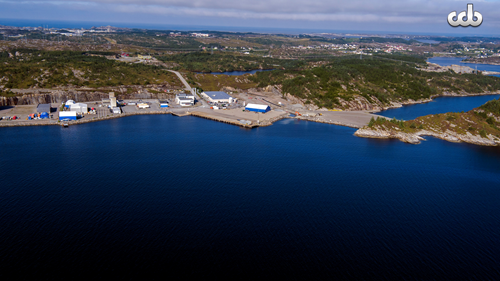
CCB Energy Park is located in the Greater Bergen region. The Northern Lights Project could encourage the growth of a whole new industry this area of Norway. Photo © CCB EH.
When will the CO2 Storage Facility go Live?
Energy majors Equinor, Shell and Total, the partners behind the Northern Lights Project, have already carried out comprehensive, preparatory studies and found a suitable reservoir for the project.
It is expected that the Norwegian government will take a final investment decision on the Northern Lights Project during the course of 2020 [Editors note: Read newly released press release from the Norwegian Government about supporting Norther Lights].
The CO2 storage facility is planned to start operating in 2023/24.
Case study: Hydrogen Production at CCB Energy Park at Kollsnes
Along with the planned Northern Lights facility, CCB Energy Park is also home to one of Norway’s major processing plants for natural gas.
This gives the site some unique benefits when it comes to producing clean fuels such as hydrogen.
ZEG Power, a company delivering innovative technology and equipment for hydrogen production from gas with integrated CO2 capture, has partnered with CCB on a new initiative to deliver clean, cost efficient hydrogen as fuel to users of fossil energy.
This may include ships, transport vehicles and various machines for industry as well as other markets.

Kathrine Ryengen (photo) in ZEG Power states that creating clean hydrogen in this way from natural gas, where CO2 is captured and stored, could provide significant opportunities for Norway in the future.
– I believe it is important for Norway to build on the technology, competency and skills gained from the oil and gas industry. By using our vast amounts of natural gas to produce clean hydrogen, we can sustain and create jobs and nurture a new export industry for Norway.”
ZEG Power has recently raised more than NOK 130 million (roughly $12 million) with the objective of building its first industrial hydrogen production plant at CCB Energy Park. Longer term, the Norwegian company plans to sell and deliver further hydrogen plants both at Kollsnes and at locations across the world.
-------------------------------------------------------------------------------------------
This article is drawn from the magazine “Powering the Future” featuring interviews with industry leaders on topics such as wind energy, CCS and hydrogen.
The magazine is a collaboration between Invest in Bergen and GCE Ocean Technology.
Contact Information
Kjersti Boge Christensen
Communication Manager


Project Langskip
The Norwegian Government recently submitted a deposit report to the parliament (Stortinget) on how they will support the implementation of capture, transport and storage of CO2 in Norway. The project has been named "Langskip".
Langskip includes support for the transport and storage project Northern Lights, a collaboration between Equinor, Shell and Total.
Northern Lights will transport liquid CO2 by ship from the capture facility to a receiving terminal in Øygarden in Western Norway.
From there, CO2 will be pumped through pipes to a storage under the seabed.
Photo: Thomas Haugersveen/ Statsministerens kontor.

CCB Energy Holding includes a number of companies in several locations in Norway.
CCB Energy Holding has its head office at Ågotnes outside Bergen, where the Port of Bergen will also be located.
The owners, Bernhard Larsen Holding and Norsea Group, have established CCB Energy Holding for industrial development related to CCB Energy Park in Øygarden.

